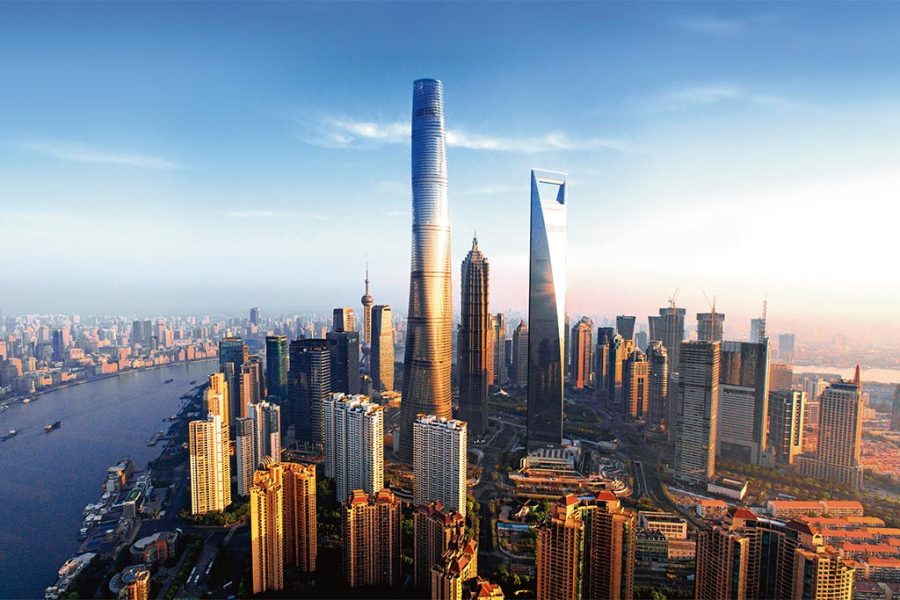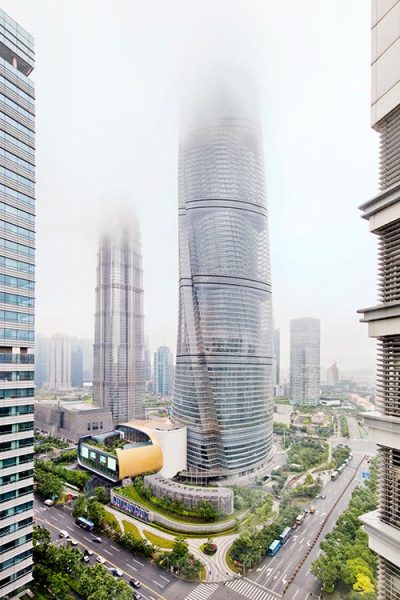Architects navigate a changing world, addressing climate change, mobility, affordable housing, equitable design and the return to work. Through collaboration and design thinking, they make efforts to offer solutions for a better life
We had the privilege of talking with Aleksandar Saša Zeljić, a Serbian architect who holds multiple positions, including Studio Director, Design Director, Regional Practice Area Leader, and Principal at Gensler, a global architecture, design, and planning firm that’s headquartered in Chicago. With an impressive career spanning over 22 years, Saša has amassed extensive expertise in a diverse range of complex and prestigious projects. He represented the perfect interlocutor for topics spanning everything from major trends in the profession to personal experiences in designing the award-winning Shanghai Tower, Manila’s Finance Centre Tower and World Plaza, as well as Chicago’s Shirley Ryan Ability Lab and 333 North Green. Considering that he is also engaged in his home country, we also covered questions related to young Serbian architects and their work.
What do you consider as the major pressing issues being dealt with by contemporary architects?
– I think architects today are designing for a radically changing world that’s facing a multitude of concurrent challenges, including climate change, mobility, affordable housing, equitable design, or return to work, to name just a few. We must confront each of these critical challenges while always meeting the goal of improving experiences for all people. In the context of that complexity, collaborative problem-solving and design thinking can push boundaries, combining ideas, tools and approaches. Understanding that many of our global issues are interconnected, we must focus on multifaceted, integrated solutions. One example of how design can be a catalyst for major change is in our engagement with the climate crisis.

As one of the most pressing issues we face today, climate change is impacted by a total of 40% of carbon emissions from the building industry, and so we have an opportunity to lead by making connections between clients and suppliers/manufacturers that can enable more productive and sustainable structures. We are also using strategic design thinking to create environmental responsibility and impact positively on communities by encouraging clients to increase their ESG goals, making buildings more desirable to tenants and investors.
With environmental stewardship as a core value, Gensler will eliminate all net emissions associated with our work by 2030. The Gensler Cities Climate Challenge (GC3) is our roadmap for how we intend to help our clients reach their carbon targets and our goal of making every building in our portfolio net zero.
Which recent works of architecture, whether your own or someone else’s, do you see as defining the future trend in the field?
– Designing for a profoundly changing world is an opportunity for all of us in the building industry to make decisions that address challenges head on with creativity and innovation. Urban areas today contribute more than 80 per cent of global GDP. That’s set to increase as the world’s urban population will more than double by mid-century. Our focus must therefore be on cities and recognising trends that will drive their success. Cities succeed and flourish because of their ability to attract diverse groups of people with a wide range of skills and perspectives.
With environmental stewardship as a core value, Gensler will eliminate all net emissions associated with our work by 2030
With this and Gensler’s annual research in mind, here are the top four trends and strategies in design. I will dub the first one “Reclaiming experience”. The absence of experience that we faced during the pandemic continues to remind people of how valuable human interaction is and how critical our spaces are in enriching our lives. By prioritising design strategies that primarily emphasise people’s needs and expectations, we can reclaim the human experience in the places where we live, work and play.

The second one is decarbonisation. Driven by the critical impact of climate change, decarbonising the built environment continues to be the imperative of our time.
As ESG (Environmental, Social, Governance) and carbon disclosure mandates catalyse transformation in the construction industry, we will see more investments in sustainable design and construction strategies that sequester carbon in buildings and document the design details of a building’s environmental and social impact.
The third one would be a lifework connection. The future of cities is being defined by their ability to reenergise the connection between life and work. The most vibrant cities of the future will be the ones that use design to successfully address the interconnected lifework issues of thriving workplaces, attainable housing, and safe and accessible transportation.
And finally, the fourth one would be equitable design. What do I mean by that? The demand for buildings and urban districts that have a higher purpose with a positive social impact will continue to drive design decisions. Creating a positive social impact means influencing everything from urban master planning to building design, as we focus on how spaces and infrastructure can address things like growing inequality, aging populations and community engagement.
You have particular expertise in designing high-rise buildings that redefine the skylines of major cities. What are the most significant challenges in designing these types of buildings? How does a building become iconic, and how did you feel when creating such edifices?
– Tall buildings are complex projects that require large, experienced teams and visionary clients, as well as local governments, to make them happen. I had an opportunity to be part of the team and lead the work on the design for Shanghai Tower, which – at 632 metres and 127 floors – is the world’s second tallest building. There are many challenges involved in the design of a building like this, from the impact of seismic, lateral forces, the selection of a structural system, an efficient elevatoring strategy, fire, life and safety, through MEP Systems, energy use – I would say perhaps some 75% of these challenges are not obvious to anyone looking at the building from the outside and without diving deep to understand how it was done.
The architectural profession is deeply rooted in the idea of serving others and pursuing dreams that exceed one’s own limitations
Moreover, buildings like this need to successfully fit the scale of pedestrian experience at the ground level, to be as inviting and pleasant to be around as they are a recognisable part of the future skyline. Lastly, they need to provide efficient functioning for their intended use. The majority of tall buildings are today mixeduse developments that have commercial, retail, hotel, or residential housing as programmes, coexisting in a single structure, and as such these buildings have additional layers of complexity that need to be considered carefully. I think solving all these challenges determine how successful and iconic a building is—being tall alone does not equate to a building being iconic.
Your career advancements are likely a dream for many young architects in Serbia who aspire to have an internationally recognised career. What recipe for success would you like to share with younger generations of architects, including those who are just starting their studies at the Faculty of Architecture?
– I would encourage young colleagues and students to think beyond talent, hard work and perseverance. On your path towards success, it is also important early on to focus on developing your skills around collaboration, and your ability to listen and build partnerships. I think that, in any professional opportunity you have, you need to be focused on being patient and present in the moment and take time to learn and grow as much as possible, while having a long view of what success means to you.

I would also say that you should learn to feel comfortable being uncomfortable at certain times, and to take risks in expanding your knowledge. Being humble about taking each of these steps towards building your career will help you understand that this profession is so much about serving others and achieving dreams that are bigger than you.
As a member of the international jury of the Council of the 45th Salon of Architecture held earlier this year, what were your major impressions regarding the quality of the submitted work and the ideas guiding the participants?
– It was a true privilege to be invited to be a juror at this year’s 45th Salon of Architecture. I appreciated the idea brought by the organisers around the necessity to develop a closer dialogue between the private and public sectors, developers/ investors and local communities and academia. This kind of partnership, in which opposing points of view are often present, has positive impacts on fraternal communities, as dialogue is the only way to make true progress as we design our cities.
I had an opportunity to be part of the team and lead the work on the design for shanghai tower, which – at 632 metres and 127 floors – is the world’s second tallest building
It was great to see projects that are being done by my colleagues practicing in Serbia and the region. I also enjoyed spending time reviewing the work of students and researchers. There were several categories of projects submitted. I think overall work quality was good. We had a lot of conversations at the level of the jury before we selected winners. Compared to where I practice, I think one of the key differences I see is in the scale of work, especially for architectural projects. Many of the projects submitted were of course smaller scale, which enabled a focus on craft and execution. I also appreciated seeing work in the interior design category and seeing how the evolution of the workplace in Belgrade’s new offices is keeping pace with what we see in United States. I would also add that having an international jury was a very smart decision by the organisers, given the critical feedback practice needed to learn, course correct, and evolve with even greater work in the future.